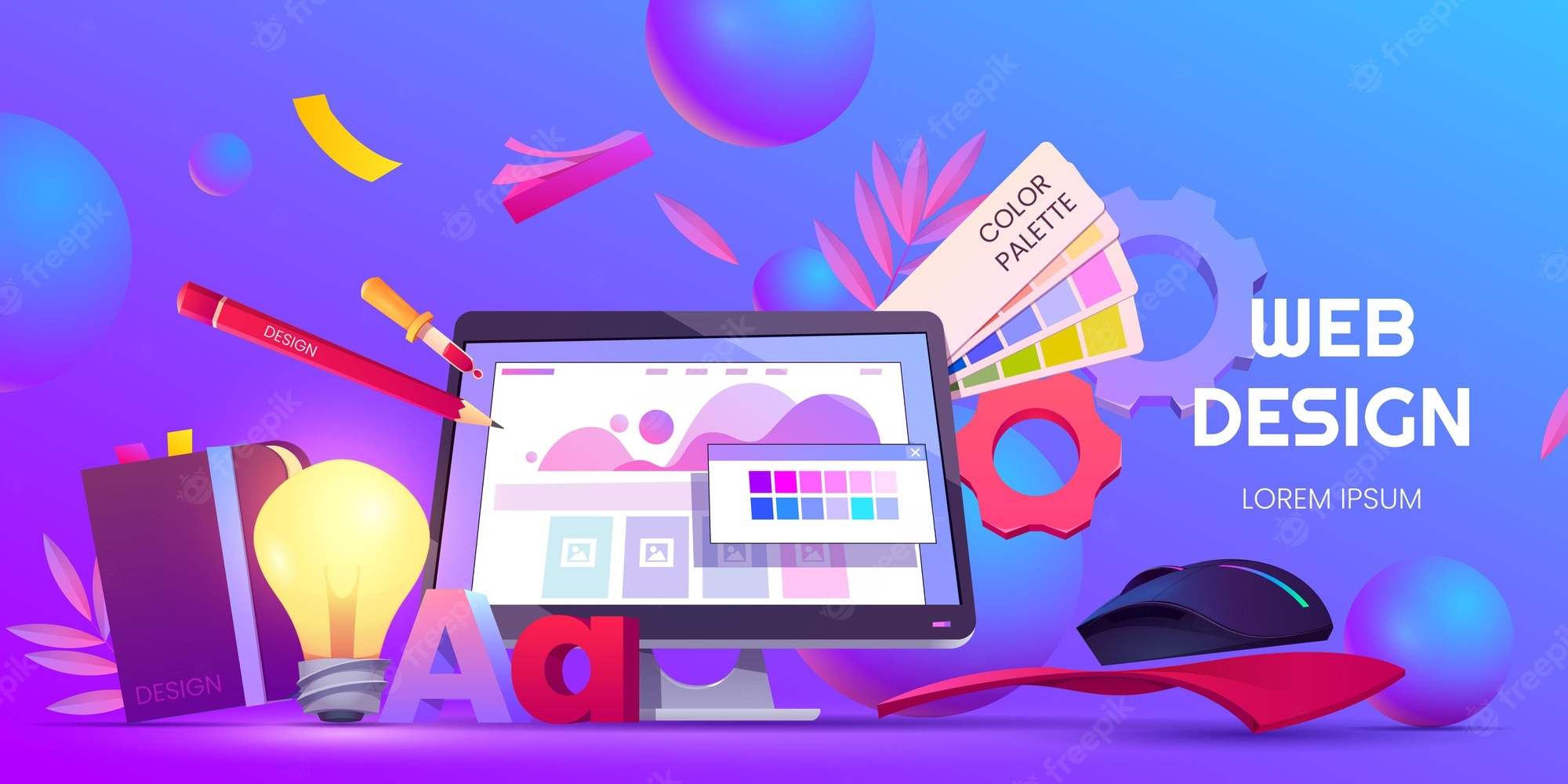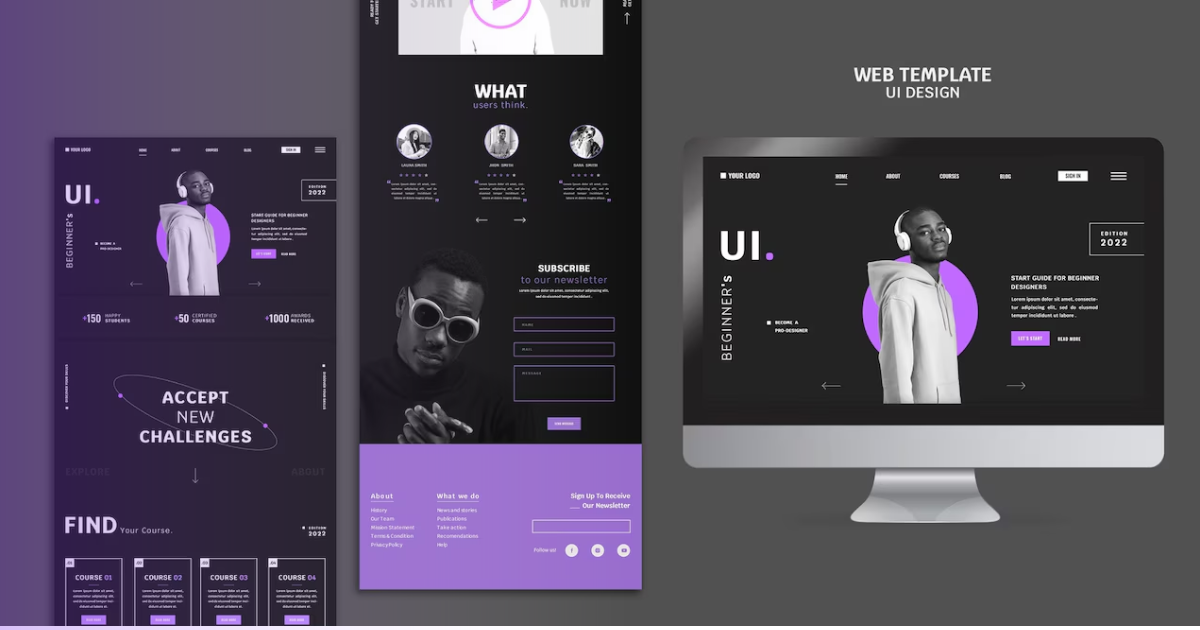Aligned Position Web Design: Delivering High-Quality, User-Friendly Web Designs for Every Industry
Aligned Position Web Design: Delivering High-Quality, User-Friendly Web Designs for Every Industry
Blog Article
The Finest Kinds Of Website Design to Improve Customer Experience and Interaction
In the ever-evolving landscape of electronic communication, the effectiveness of Web layout considerably influences user experience and involvement. Various layout strategies, such as minimal, receptive, and interactive formats, each offer unique benefits that can cater to diverse user demands.
Minimalist Web Style
As electronic landscapes end up being progressively messy, minimalist website design has arised as a powerful approach to boosting customer experience. This design philosophy prioritizes simpleness, concentrating on important elements while getting rid of unnecessary disturbances. By using sufficient white area, straightforward navigating, and a restricted shade scheme, minimal layout fosters clearness and directs customer focus to essential web content.
The core concept of minimalist website design is to produce a seamless communication for users. By decreasing cognitive lots, users can swiftly understand details without really feeling overwhelmed. This direct approach not only improves use but additionally encourages interaction, as visitors are much more likely to discover a site that is simple and visually attractive to navigate.
In addition, minimalist style often highlights typography and images, making use of these aspects strategically to communicate messages successfully. In essence, minimalist Web style is not just a fad; it is a thoughtful method that identifies the importance of user-centered design.
Receptive Web Style
In today's varied electronic environment, responsive website design has become vital for producing a seamless customer experience throughout a wide variety of tools. As individuals gain access to web sites on smartphones, tablet computers, desktops, and laptop computers, the capacity of a website to adapt its layout and content to different display dimensions and resolutions is crucial.
Receptive website design employs flexible grids, photos, and CSS media questions to make sure that Web content is presented ideally, no matter the tool utilized. This method not just improves the aesthetic allure of a site however likewise significantly improves usability. Users are a lot more most likely to engage with a site that provides a consistent experience, as it removes the disappointment of needing to focus or scroll excessively.
In addition, search engines, including Google, focus on mobile-friendly internet sites in search rankings. By adopting responsive design, services can boost their exposure and get to a wider target market. This strategy also streamlines web site upkeep, as a solitary variation of the website can cater to all devices, lowering the need for multiple variations. In recap, receptive website design is an essential practice that improves customer experience, engagement, and general contentment.
Interactive Website Design
Responsive Web design lays the foundation for boosting individual experience, however interactive website design takes this an action even more by engaging customers in an extra dynamic method - Aligned Position Web Design. By including components such as animations, clickable models, and real-time responses, interactive website design captivates users, drawing them right into a richer surfing experience
This strategy not only fosters interaction but also encourages customers to explore material proactively rather than passively consuming it. Strategies such as gamification, where users earn rewards for completing jobs, can dramatically boost the time spent on a site and boost overall complete satisfaction. In addition, interactive functions can streamline complicated info, making it much more enjoyable and digestible.

Integrating interactive design components can also lead to higher conversion prices, as individuals are a lot more most likely to involve with a site that proactively involves them. Aligned Position Web Design. Inevitably, interactive Web style transforms individual experiences right into remarkable journeys, making certain that visitors return time and again
Apartment Design
Identified by its minimalistic technique, level design emphasizes simpleness and capability, removing unnecessary elements and concentrating on necessary features. This design approach prioritizes usability, guaranteeing that customers can browse user interfaces easily and performance. By utilizing a clean aesthetic, level style removes the clutter commonly found in a lot more ornate styles, therefore enhancing individual concentrate on web content and performance.
The trademark of flat layout exists in its use of strong colors, simple typography, and geometric forms. These elements contribute to a visually enticing user interface that is both modern and approachable. In addition, flat style fosters a sense of clearness, enabling users to recognize vital see here now activities and information without diversion.
In addition, level style is especially effective in responsive Web style, as its simpleness converts well across various tools and display dimensions. By focusing on vital functions, level layout not only satisfies user needs yet also motivates smooth interaction, making it an essential part of reliable Web layout strategies.
Flexible Website Design
Adaptive Web style personalizes the individual experience by creating numerous dealt with formats tailored to various screen dimensions and devices. Unlike receptive design, which fluidly readjusts a solitary layout, adaptive style employs unique designs for certain breakpoints, making certain ideal discussion on various platforms. This technique permits designers to concentrate on the unique attributes of each tool, boosting functionality by supplying precisely what customers require based on their context.
One of the key benefits of adaptive Web layout is its capability to optimize lots times and performance. By serving tailored material and photos that fit the customer's gadget, web sites can lessen information usage and enhance loading speeds. This is specifically helpful for individuals with slower links or restricted information plans.

Furthermore, flexible design facilitates an extra controlled and consistent branding experience. Considering that developers develop multiple formats, they can guarantee that the aesthetic aspects align with the brand name's identity across different platforms - Aligned Position Web Design. This results in a natural customer experience, improving engagement and promoting individual retention
Final Thought
Minimalist design fosters quality and focus, while receptive layout guarantees versatility reference across different devices, advertising availability. Collectively, these design comes close to contribute to the development of user-friendly environments that not only enhance complete satisfaction yet additionally drive higher conversion rates, underscoring their critical relevance in modern Web style approaches.

Minimal style promotes clarity and focus, while receptive design ensures adaptability throughout different have a peek at these guys gadgets, promoting ease of access. Jointly, these design comes close to add to the creation of easy to use atmospheres that not just improve contentment but likewise drive greater conversion prices, emphasizing their essential relevance in contemporary Web design approaches.
Report this page